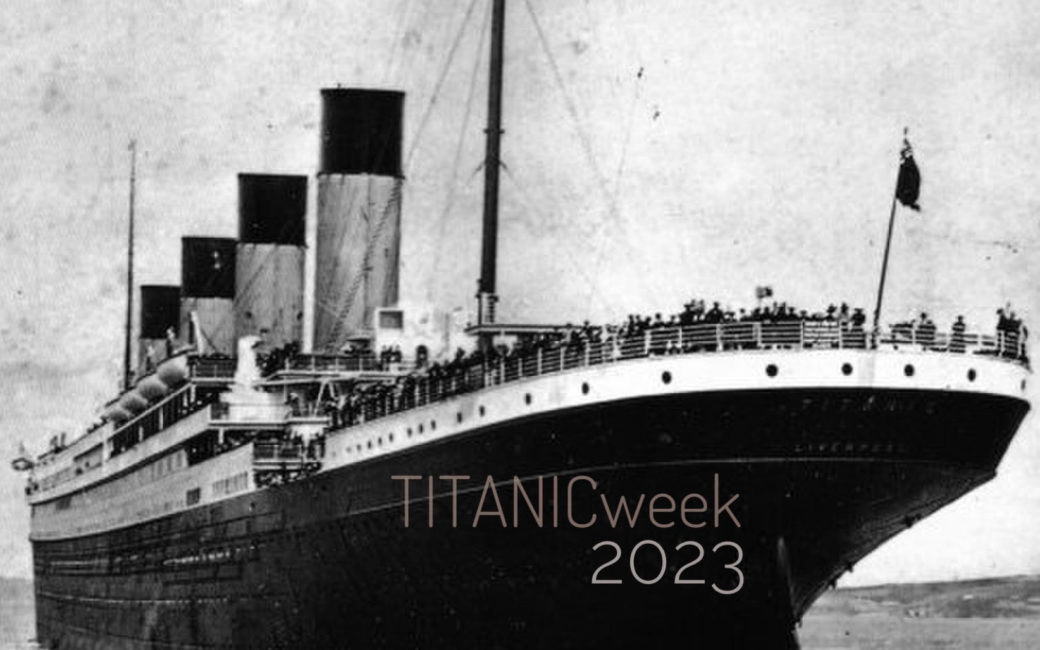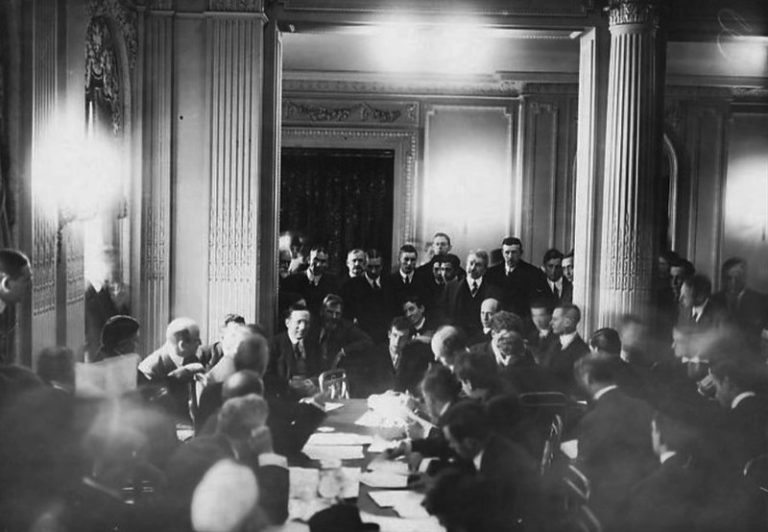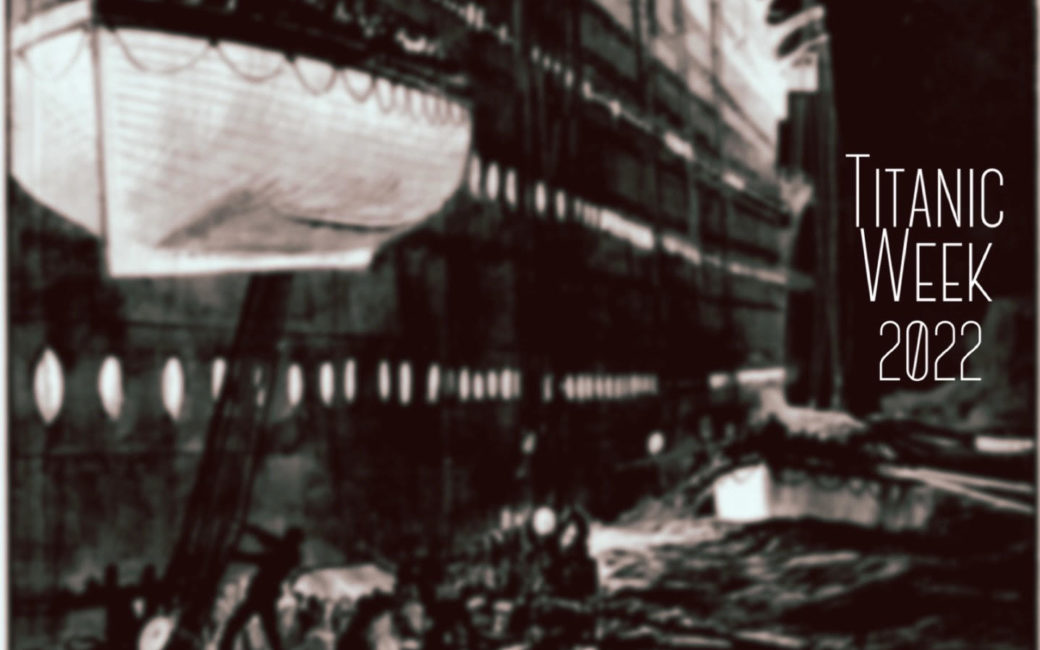"He Breathes the Air of Two Hemispheres": Francis Davis Millet
In March of 1912, the Washington Times published a laudatory piece about the "soldier, painter, and connoisseur": the American artist Francis Davis Millet.
No chapter of fictional adventure can rival a chapter in the real life of Mr. Millet. Soldier of fortune, adventurer, war correspondent, art student, and artist, he seems to have been constituted of stuff which makes dramatic events possible.
Indeed, Frank Millet seemed fated to be the common denominator through decades of extraordinary events.
He was a drummer boy in the American Civil War. He was a correspondent in the Turkish-Russo conflict and the Spanish-American War. Mark Twain had been his best man. He socialized with the President of the United States. He was the man who made "The White City" white for the Chicago World's Fair. He was asked to contribute to the design of the Lincoln Memorial in Washington's D.C.
He sailed on Titanic.
Apparently, among Mr. Millet's many remarkable talents was his lifelong ability to somehow be everywhere, all at once.
Once, while in Japan, his companion joked that perhaps, Frank was finally in a land where no one would recognize him. A waiter then approached Frank and addressed him by name, because he had been in the artist’s company at the Chicago Exposition.
According to friends and critics alike, Frank was an exalted wanderer at heart and of mind.
Inertia is not one of Millet's faults; he is ever in movement, a comrade in the world of art. Are the heavens to be decorated? See Millet. Is there to be a banquet for the gods? see Millet. Has the army moved? Yes, and Millet with it. He breathes the air of two hemispheres... he is contagious in art and manly enthusiasm.
Citation Courtesy of "Gilded Lives, Fatal Voyage: The Titanic's First-Class Passengers and Their World," Hugh Brewster, 2012.
Frank Millet boarded Titanic as a First-Class passenger on the evening of April 10, 1912, in Cherbourg, France.
He had been in Europe since early March of that year, in the company of his dearest friend, Major Archibald Butt.
They had been close companions for many years; they had even been housemates in Washington, D.C., hosting extravagant parties for the elite society of the capital.
Major Butt thought highly of Millet, and the latter of him. On the older man Major Butt leaned for advice and took it, and the two men had a sympathy of mind which was most unusual.
Archie, as he was called, had reportedly been in danger of anxious collapse in early 1912. He had been walking a tightrope between his allegiance to former President Theodore Roosevelt, and current President William Taft. "Do you wonder," Archie asked his wife Clara, "that our nerves have been disintegrated and that our innards are all upside down?"
At the same time, Frank Millet was preparing for a business trip in Rome to handle administrative matters as the head of the American Academy of Art.
Concerned for his friend's well-being, Frank interceded to President Taft in a letter, begging leave for Archie so that the friends might travel in Europe together.
The President consented.

Major Archibald Butt. Courtesy of the Library of Congress.
After a month abroad, the United States beckoned Frank back to finalize the design for the proposed Lincoln Memorial.
Archie and Frank briefly parted ways so the latter could conduct some business in Europe while the former stayed back in England. They intended to meet up once again on Titanic's maiden voyage.
The two did not share a cabin, however, because Archie had far too many trunks.

Portrait of Francis Davis Millet circa 1910. Courtesy of the Smithsonian Institution.
Once reunited on board Titanic on the evening of April 10th, Archie and Frank sat down to dinner with a mutual friend from Washington, D.C.: Clarence Moore. The trio would gather regularly throughout the voyage.
The next day, Frank posted a letter to fellow artist Alfred Parsons. He was evidently vexed, and uncharacteristically grouchy.
Queer lot of people on the ship. Looking over the list I only find three or four I know but there are a good many of "our people" I think and a number of obnoxious ostentatious American women, the scourge of any place they infest and worse on shipboard than anywhere. Many of them carry tiny dogs and lead husbands around like pet lambs.
Citation Courtesy of "Gilded Lives, Fatal Voyage: The Titanic's First-Class Passengers and Their World," Hugh Brewster, 2012.
Frank, a gentle spirit, was not usually so sour; in fact, his dear friend and best man Mark Twain once said that he intended to call all cordial, affable people “Millets.”
But then again, he had just had "the Devil of a time in Rome" with the project he was involved in, and stated outright that he was ready to throw up his hands and "chuck it" altogether.

Frank Millet’s portrait of his friend Mark Twain, 1877.
In the same letter, Frank took multiple opportunities to marvel at Titanic’s finery and size.
I thought I told you my ship was the Titanic. She has everything but taxicabs and theatres...
The fittings are… exceedingly agreeable in design and color.
As for the rooms they are larger than the ordinary hotel room and much more luxurious with wooden bedsteads, dressing tables, hot and cold water, etc., etc., electric fans, electric heater and all. The suites with their damask hangings and mahogany oak furniture are really very sumptuous and tasteful.
I have the best room I ever had in a ship and it isn't one of the best either, a great long corridor in which to hang my clothes and a square window as big as the one in the studio alongside the large light. No end of furniture cupboards, wardrobe, dressing table, couch etc., etc. Not a bit like going to sea.
You can have no idea of the spaciousness of this ship and the extent and size of the decks.
Citation Courtesy of "Gilded Lives, Fatal Voyage: The Titanic's First-Class Passengers and Their World," Hugh Brewster, 2012.
Frank and Archie whiled away the voyage in each other’s company. They often congregated with Clarence in the First-Class Smoking Lounge.
According to passenger Marie Grice Young, she often spotted the two friends taking vigorous walks around the decks as they chatted.
Frank and Archie also fraternized with fellow First-Class passenger Archibald Gracie. The old Colonel had likely tried to recommend his own book about Chickamauga to them, just like he had done with a very accommodating Isidor Straus. But Frank was probably uninterested, given that the men’s notions of the Civil War were drastically different.
Archie Butt was born in Georgia in 1865: the same year the Civil War had ended. And he was the nephew of a Confederate general.
Frank, on the other hand, was a Massachusetts native who had been a drummer for the Union Army, and his father had been a Union surgeon. He had even assisted his father’s surgeries on the field in 1864.
And while it might seem that Frank’s battlefield era was long past, the memories stayed with him. He regularly attributed his use of vivid, blood-red paint to his hospital experiences in the war.
Frank’s true feelings about the encounters with bombastic, former-confederate Colonel Gracie, whatever they might have been, are undocumented.

Francis Davis Millet at work in his studio. Courtesy of the Smithsonian Institution.
During the evening of April 14th, Frank and Clarence took dinner at their usual table in the First-Class dining saloon.
Archie, meanwhile, attended a party in the A La Carte restaurant held by George and Eleanor Widener, reportedly in honor of Captain Smith.
Afterward, the three friends settled in for a late night of cards in the Smoking Lounge with fellow passenger Arthur Ryerson. They were there at 11:40 p.m., the moment of Titanic’s collision with the iceberg.

Clarence Moore. Courtesy of the Library of Congress.
The men reportedly continued their game until about 1:00 a.m. “They were perfectly imperturbable,” testified Archibald Gracie at the American Senate Inquiry.
The last sighting of Frank Millet was on deck, assisting the loading of lifeboats alongside Archie and John Jacob Astor.
Frank never sought salvation himself. Neither he nor Archie survived.
Francis Davis Millet’s corpse was the 249th recovered by the Mackay-Bennett.
NO. 249. - MALE. - ESTIMATED AGE, 65. - HAIR, GREY.
CLOTHING - Light overcoat; black pants; grey jacket; evening dress.
EFFECTS - Gold watch and chain; "F. D. M." on watch; glasses; two gold studs; silver tablet bottle; £2 10s. in gold; 8s. in silver; pocketbook.
FIRST CLASS.
NAME - FRANK D. MILLET (£)
He was 65 years old.
And, devoted even in death, Frank was remembered in conjunction with his most beloved friend, Archie.
They were jointly mourned across the nation by civilians and the famous alike, and were tearfully praised for their so-called glorious deaths. During a memorial for Archie, President Taft broke down in tears during his eulogy, and could not bear to continue.
It is no surprise to any man who knew Major Butt that he met death like an officer and a gentleman. And none who knew Frank Millet would have expected anything but self-immolation in behalf of women and children.
Mr. Millet was given to unostentatious charities all his life and he spent nearly all he made on others. He was most eager to help any one in any way. Major Butt's kindliness and desire to be helpful and ability to carry out his desires are almost too well known for comment. We can ill spare such men.
SOURCE MATERIAL
https://www.encyclopedia-titanica.org/titanic-victim/francis-davis-millet.html
https://moa.byu.edu/francis-davis-millet-and-titanic/
https://www.encyclopedia-titanica.org/francis-d-millet-soldier-painter-and-connoisseur.html
https://www.encyclopedia-titanica.org/titanic-victim/archibald-butt.html
https://www.encyclopedia-titanica.org/description-of-recovered-titanic-bodies.html
https://www.encyclopedia-titanica.org/death-major-butt-mourned-washingtonians.html
https://www.titanicinquiry.org/USInq/AmInq11Gracie03.php
Brewster, Hugh. "Gilded Lives, Fatal Voyage: The Titanic's First-Class Passengers and Their World." Crown Publisher, New York. 2012.































